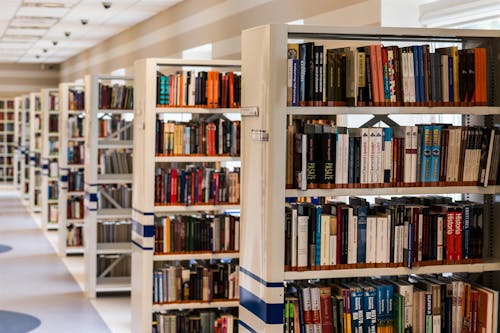The Digital Revolution of the Blind School
2020-01-12 | By Orcam Staff

Only a few decades ago, there were very few teaching methods that could be used to teach blind students. The most common method was using Braille textbooks. Another method was to play audio recordings to students. New assistive technology devices for people who are blind or visually impaired are now so advanced, that they are becoming the best tools for teaching in a blind school.
The Decline of Braille

According to the National Federation of the Blind, less than 10% of the blind population knows how to read braille text. Furthermore, there is currently a shortage of braille-certified teachers. Any blind school that uses braille as its primary teaching method would find it difficult to find braille-certified teachers. This makes it even harder for schools to rely on braille textbooks for teaching their students. Regardless of these facts, printed textbooks are in decline as well. There are a number of reasons that schools are abandoning printed materials.
One of the main reasons is the fact that tablets, laptops, and computers can digitally access enormous amounts of content for students to learn from, in class, at the library, and at home as well. This can be done both on the internet and on databases of educational content. A number of other reasons are leading the modern academic world to abandon printed materials. Costs of printing and shipping textbooks are another. However, the main reason is that the use of technology has become so broad and efficient, that print is barely used anywhere anymore. Environmental considerations are another one of the reason for schools to abandon print.
Abandoning The Print, Embracing The Digital

Printed content is being pushed out. Consuming content through a screen is becoming the norm everywhere. Therefore, it should come as no surprise that it is happening in the academic world too. Educational content is updated at least once every few years. To replace, update and distribute digital content takes only a fraction of the time that it would take with printed materials. When updating content needs to be done, it only needs to be updated in one place when relying on digital content as opposed to printed content.
Blind School Prepares Students for Modern Careers

A blind school, just like any school, prepares students for life after graduation. In the digital age we live in today, almost every work environment involves constant engagement with technology. Interaction with software platforms on technology devices has become a major part of modern life. This is true not only in our personal lives, it applies to most of our work environments as well.
Students at a blind school need to prepare for employment in the modern job market. Work documents and files are rarely printed on paper. Almost every office or workplace uses digital files that are written, edited and read on screens. Relying on braille for reading documents will limit any blind or visually impaired person at work. Adapting to the digital age during elementary school and high school will help blind and visually impaired students integrate into the modern workplace in an easier and more efficient way.
Introducing OrCam MyEye 2

There are a number of devices that are capable of helping visually impaired students throughout their studies. Among them, is OrCam MyEye 2. OrCam MyEye 2 uses the most advanced artificial intelligence and machine learning technology. Portable, wearable, and lightweight, it leaves both hands available for other activities while the device is being used. Not requiring an internet connection, it can be used anywhere.
This revolutionary device provides users with a number of features that improve their quality of life beyond measure. The text reading feature allows students at any blind school to study independently from any textbook or digital surface. They can also recognize faces, colors, money bills, barcodes of shelf products, personal items, and more…



